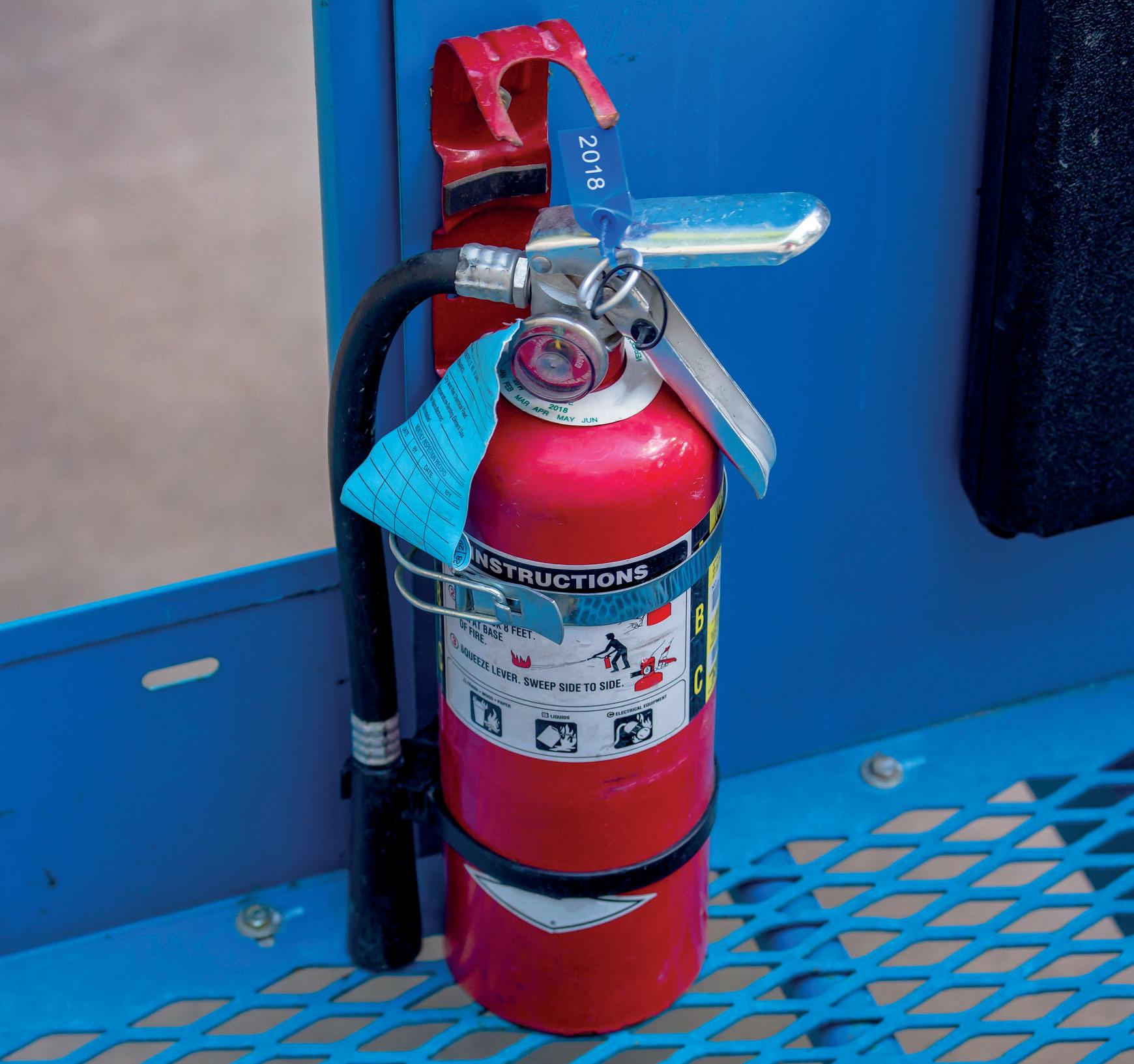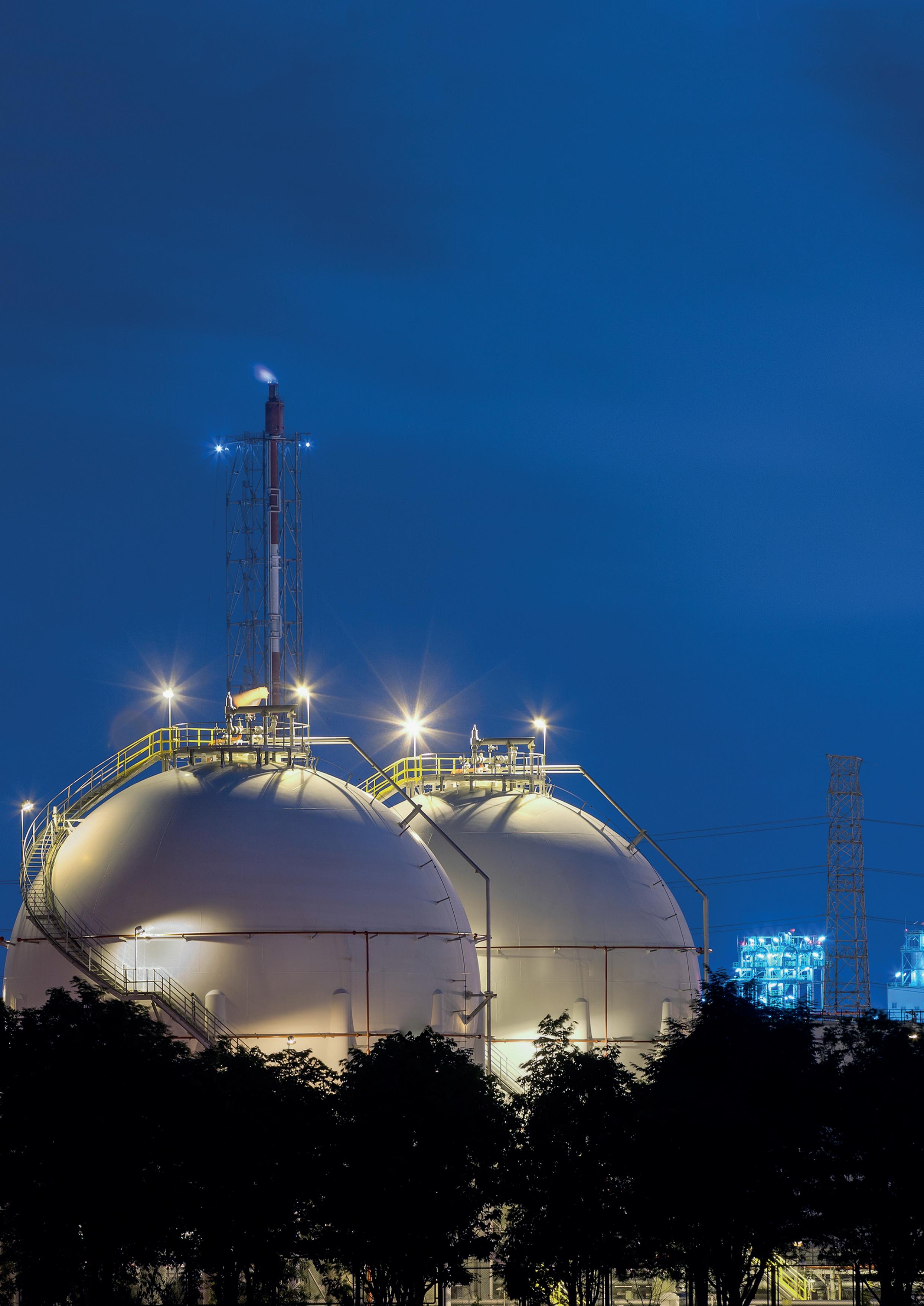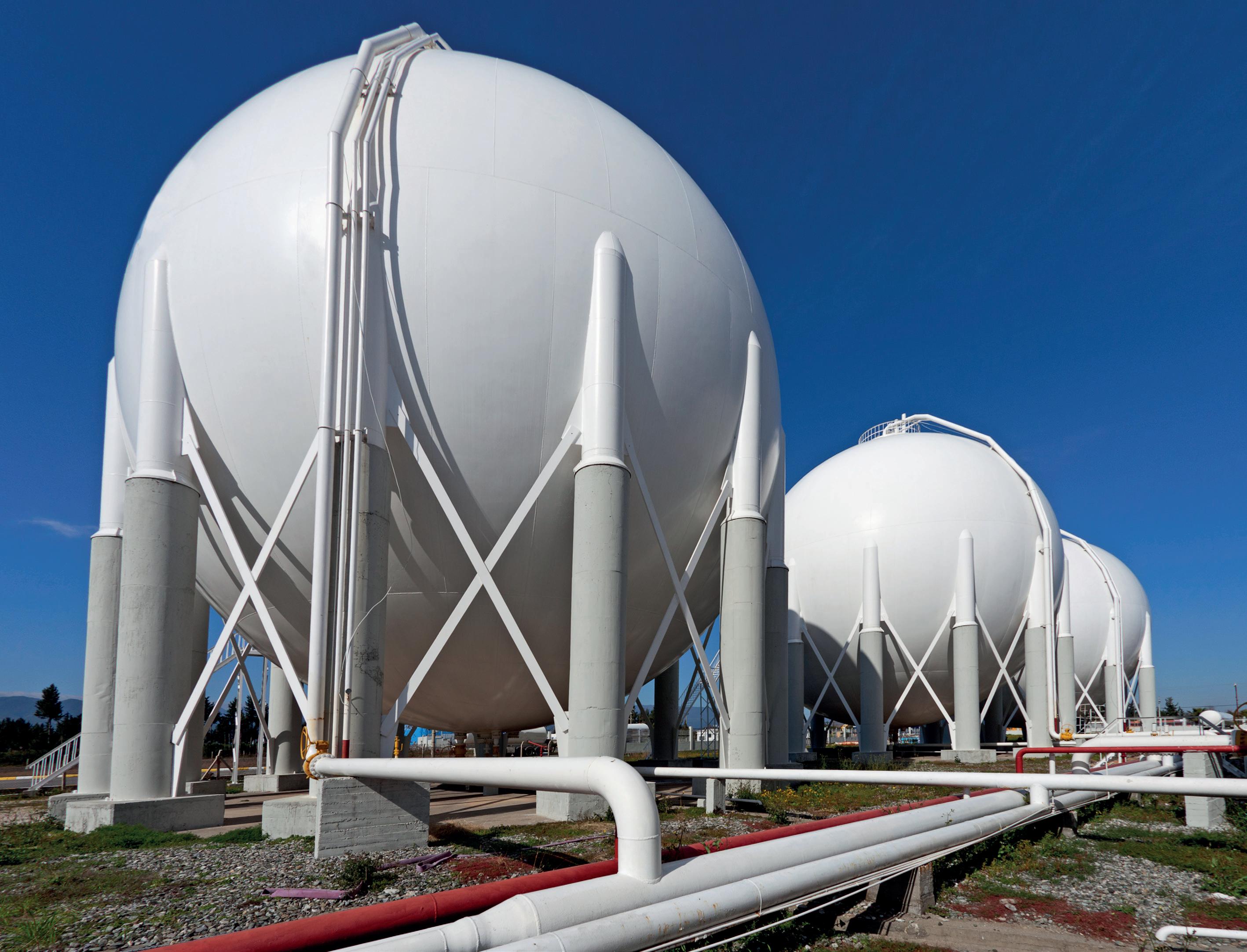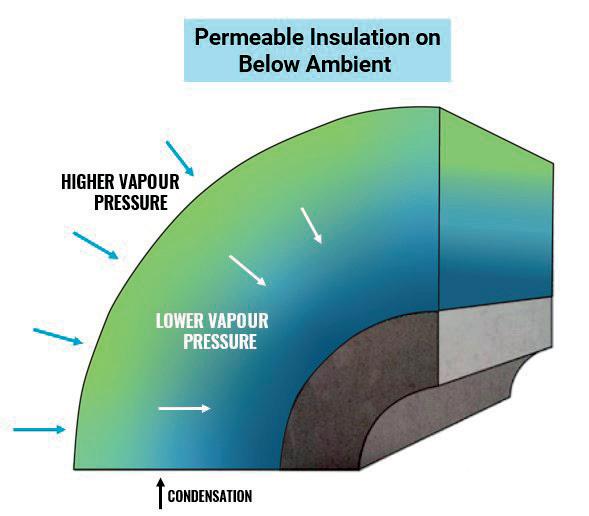
9 minute read
The power of insulation
Mineral wool or fibreglass insulation can be safely used on horizontal pipe runs where the potential for a leak is negligible. It is wise to consider installing a metal drip ring to separate the fibrous material from the closed-cell insulation. It is also recommended that the insulation be covered with aluminium cladding to protect from external hazards, and that the use of insulating flanges is avoided wherever possible, as they are potential leak points. If fluid-soaked insulation is discovered, it should be addressed with haste and caution. Cladding and soaked insulation must be removed very carefully and slowly, preferably with the system cooled down.
Pumps and seals
Most high temperature systems utilise heavy-duty cast steel centrifugal process pumps with air or liquid-cooled stuffing boxes and bearings that are suitable for the process temperatures. Mechanical seals constructed of tungsten or silicon carbide are widely used. Mechanical seals should be installed with care, as fingerprints or dust/debris can create leaks. Some pump manufacturers may also specify a seal flush or inert gas purge to keep the seal faces free of debris and assist with secondary cooling. Despite best efforts, pump seals will eventually fail, and should be replaced as soon as they start to leak. A catch pan under a pump is not an acceptable fix, as accumulated oil can auto-ignite.
Seal-less pumps such as mag-drive or canned motor pumps eliminate many of the leakage issues associated with mechanical seals, and are often specified for systems operating above the atmospheric boiling point of the fluid. These pumps provide enhanced leak protection vs mechanical seals, but are more sensitive to accumulated degradation products and contaminants. Any vibration or noise at the pump should be investigated promptly. Expansion stresses on the pump should be alleviated by installing expansion loops, joints, or flexible piping rated for the process requirements.
Instrumentation and safety controls
Fire potential can be minimised by employing pressure, temperature, and flow monitoring controls throughout the fluid system, and at the process users. All specified components must be compatible with the fluid and the operating conditions, and failure scenarios should be considered during the selection process. Differential pressure gauges, flow control valves and temperature modulation should all be harmonised in such a way that the system responds uniformly to process demands.
Additionally, all safety controllers and components should be included in preventative maintenance schedules to ensure that they are working appropriately. Such controls may include over-temperature protection, low flow protection, expansion tank level alarms/interlocks, and relief devices that trigger when an abnormality occurs. In addition, continuous video surveillance at multiple points of the system can help to identify problems before they become catastrophic.
Catch/overflow tanks
These vessels are typically closed head and dished bottom with a centre-mounted drain valve to allow for complete
draining, and are outfitted with a high-pressure sight glass. The tank vent should be routed out of the heater room to a safe area or adequate containment system. Catch tanks may also be outfitted with fire protection to minimise fire hazard at the discharge point.
Fire containment
In the rare and unfortunate scenario that a fire occurs, provisions must be available to contain and extinguish it as quickly as possible. Remotely-operated fail safes such as pump or fuel shut-off valves can go a long way in preventing a catastrophe. Automated sprinkler systems are recommended for release at critical areas throughout the system, such as at the heat source, in control rooms, and around relief discharges and process users.
Automated deluge protection may also be considered for critical areas. A system of containment dikes and reservoirs should be implemented to safely contain large volume losses. Class B fire extinguishers should be available in all critical areas for emergency response. Fireboxes may be outfitted with snuffing systems designed to prevent tube-rupture fires. These systems typically use steam or inert gas to snuff the combustion chamber in the event of a high exhaust stack temperature failure. Electrical equipment should be designed and installed to prevent ingress of heat transfer fluid.

Figure 2. Routine system reviews should be conducted as part of an operational safety programme, and anomalies should be addressed to ensure long-term safety of the system.

Figure 3. Provisions for fire suppression should be part of the design phase, but all systems can benefit from fire safety analysis.
Fluid considerations and proactive maintenance
The thermal fluid flash point is often the first thing that is scrutinised when determining the cause of a fire. In practice, nearly all high temperature heat transfer systems routinely and safely operate at temperatures above their fluid’s flash and fire points, but never above their autoignition temperature. The sequence of events that leads to most thermal fluid fires is nearly always a function of system failures and/or poor maintenance – independent of the fluid flash point. In practice, leaking fluid will cool quickly when exposed to air, dropping below the flash point. Any vapours produced will turn to smoke if the ventilation system is properly designed.
However, excessive heat flux can result in irreversible damage to the fluid, creating low boiling byproducts with lower flash points. These byproducts can reduce the operational safety margin of the fluid. As such, maintaining the health of the heat transfer fluid is also critical to the long-term safety and reliability of the system. In-service heat transfer fluid should be analysed at least once per year, and each time a process upset occurs.
For high temperature systems, testing should include a distillation range analysis to determine whether there are any accumulated low boilers. Excessive low boilers can cause mechanical problems (e.g. pump cavitation or unexpected pressure relief) and can generate higher vapour pressures if leaked from the system. Fluid oxidation level and solids accumulation should also be monitored, as these byproducts can also impact system safety. Accumulated sludges in the expansion tank have been known to interfere with proper functioning of the low-level switch, and sludges passing through the heater can further convert to coke, insulating heater tubes and creating hot spots, as previously discussed. Provisions for a side stream filtration loop are advised to keep solids accumulation at a minimum.
Conclusion
Relatively few fires have originated in thermal fluid systems since their adoption many decades ago. The majority of these have been caused by ignition of fluid-soaked insulation, loss of flow, cracked heater tubes, or leakage – all the result of improper design or operation and maintenance of the system. In general, all systems should be designed and/or reviewed by a qualified engineer who is familiar with the equipment.
By adhering to established design and installation guidelines, and by following all OEM recommendations and preventive maintenance schedules, the risk of a thermal fluid fire can be significantly reduced. All aspects of system design and fire prevention cannot be fully addressed within the context of this article. Designers and operators should always consult with knowledgeable experts and OEMs for the best recommendations.
Mackenzie Michalski and Allen Dickey, Owens Corning, USA, present three goals for storage vessel insulation design.
Bullet tanks and storage spheres can be used to house a wide range of substances including anhydrous ammonia, LNG, LPG, NGL, gasoline, naphtha, butadiene, ethylene, oxygen, nitrogen, argon, biogas, sewage gas and wastewater, many of which are kept at below-ambient temperatures.
Spherical storage vessels are used throughout the petrochemical industry. There are several benefits to using spherical construction for storage vessels.

Stress concentration in a sphere is reduced when maintaining pressurised materials, and the stress will be uniform across the surface. Additionally, there is less exterior surface per volume than for cylindrical geometry. Bullet tanks are also an integral element in the processing industry, serving as storage for materials before they are introduced into the process.
There are risks that challenge the long-term, efficient and cost-effective functioning of storage spheres and bullet tanks. These include moisture penetration, which will degrade thermal performance, lead to potential corrosion on the vessel or support structure, and risk of fire. Correctly designing and installing insulating systems that use impermeable insulation, such as close-celled cellular glass insulation, can mitigate these risks.
Goal one: protecting thermal performance
Warm air can carry more moisture than cold air, so when warm, moist air meets colder air and cools, the warm air sheds moisture through condensation until a new equilibrium or ‘dew point’ is reached. Similarly, when warm, moist air interacts with a below-ambient insulated system, a vapour pressure drive is created, as the cooling air near the insulated surface seeks to equalise pressure by driving moisture toward colder temperatures inside the insulation. The end result is surface condensation. In the case of insulated storage vessels, this condensation will form on the outer edge of insulated systems and, if the insulation is absorptive, will result in moisture buildup in the insulation.
Moisture in insulation reduces thermal performance and increases thermal conductivity. Keeping moisture out of the insulation maintains the thermal efficiency of the system because water conducts heat at a rate that is approximately 20 times higher than the average thermal insulation. In other words, allowing moisture to enter and remain in the insulation increases heat transfer. A 1% increase in moisture within insulation can increase conductivity by 23%.1 Moisture in insulation can physically damage insulation. During temperature cycling periods – such as when tanks go from ambient to below ambient and return to ambient – freeze/thaw cycling will occur. Freezing moisture in the insulation damages the insulation and further degrades the thermal performance. Designing a vapour-proof system using an impermeable material, such as cellular glass insulation, and using insulation thicknesses designed to maintain a surface temperature that will be above the dew point, can help mitigate the risk of thermal performance damage from vapour pressure.
Care also needs to be taken during the design to allow for slight changes in the dimensions of the vessel. Insulation is usually applied to a sphere or tank at ambient temperature. As steel contracts and the temperature is reduced, the dimensions of the vessel will change slightly when filled and put into operation. The insulation system needs to be designed to account for this dimensional change and any potential temperature cycling during operation as the vessel is emptied and refilled. The coefficient of thermal expansion of cellular glass insulation is close to that of steel, and when fully adhered to a sphere or bullet tank using a flexible adhesive/sealant, the insulation system remains tightly bonded to the surface of the vessel during cycling and normal operation. As a result, the flexible adhesive/sealant combined with the impermeable cellular glass keeps the insulation system sealed against moisture and vapour penetration.
Using cellular glass insulation reduces the risk of product loss and decreased system efficiency by controlling heat transfer and preventing moisture intrusion. Additionally, using cellular glass means that the insulation will not absorb flammable liquids or hydrocarbons in the event of a leak. Some open-celled insulations can, even if they are hydrophobic materials, and this increases the risk of a fire occurring.

Figure 1. Storage spheres and bullet tanks can contain liquids at a range of temperatures and face risk from vapour drive, corrosion and fire.

Figure 2. Temperature cycling can allow moisture to move further into absorptive, below-ambient insulation systems, creating a damaging freeze/thaw cycle that lowers system thermal performance.
Goal two: mitigating risk of corrosion
A second risk to consider when designing insulation is corrosion, which globally causes approximately









